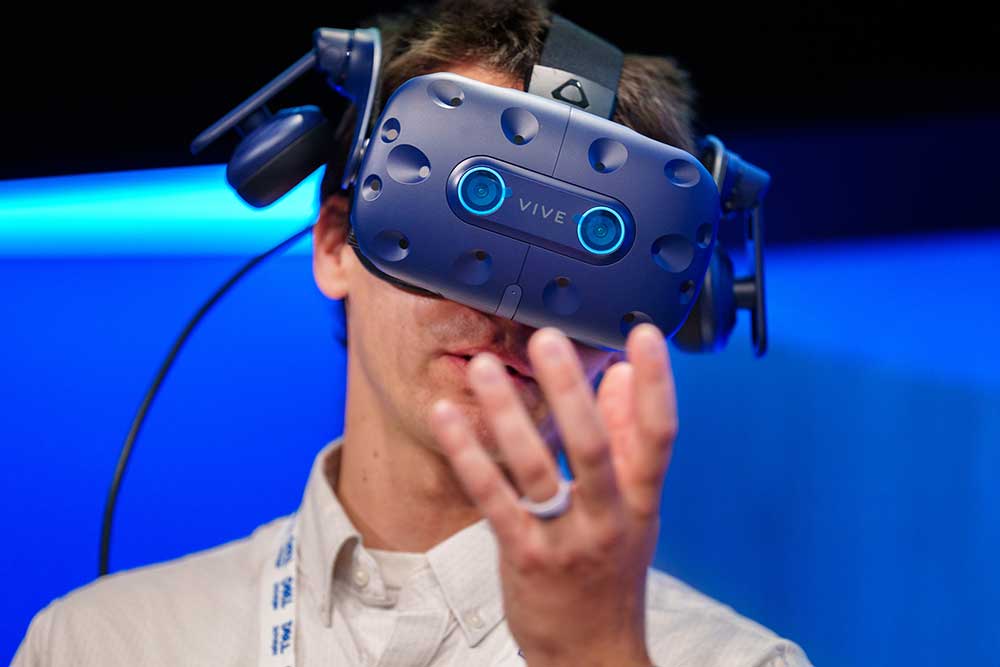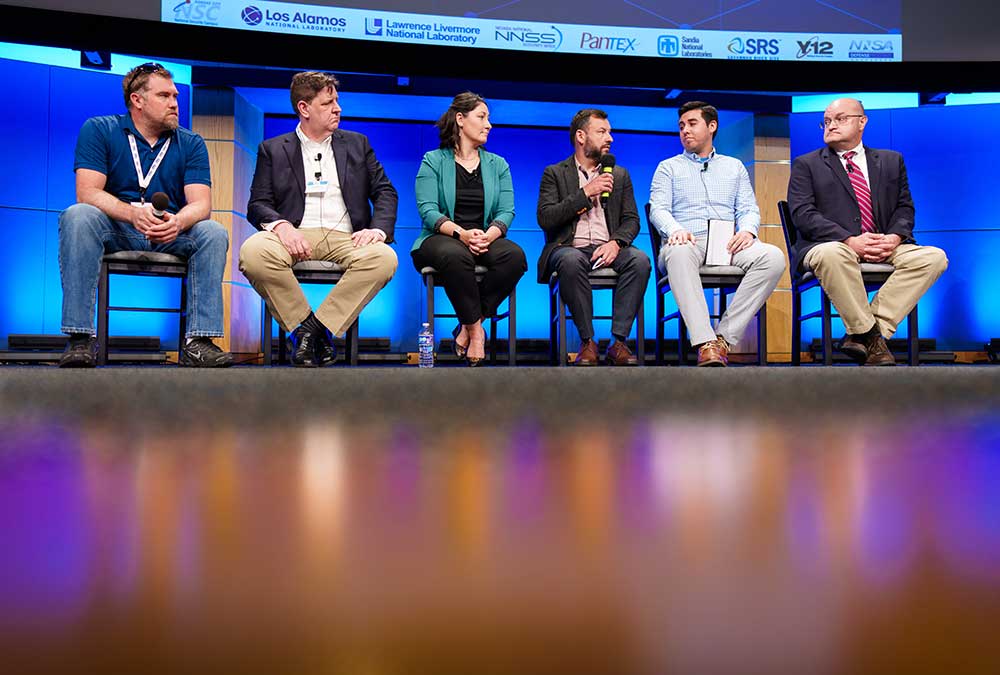Digital engineering NNSA priority

Sandia recently hosted the third annual Digital Engineering Workshop, drawing more than 500 participants both in-person and online. Attendees from across the NNSA nuclear security enterprise, including labs, plants and sites, as well as representatives from NASA and private industry, gathered for the event.
The workshop took place May 21-23 at the Steve Schiff Auditorium at Sandia in Albuquerque. The workshop served as a forum for open discussions on collaborative digital engineering efforts throughout the enterprise. Digital engineering accelerates system development by streamlining design, analysis, integration and qualification; enhances real-time collaboration; eliminates data translation errors; informs data-driven decisions; and provides model-based product definitions to sustain systems throughout their operational life.
The enterprise’s goals are to standardize software and tools, adopt common language and treat data as an asset within the nuclear security enterprise, making it accessible to those who have a need to know.
“Digital engineering will improve execution and accuracy, while reducing the need to translate data from one tool to another,” said Deputy Labs Director Laura McGill, co-leader of the nuclear security enterprise’s digital transformation senior steering group, formed in 2023.
Digital engineering is pivotal to Sandia’s goal of leading in modern engineering, one of the Labs’ two big goals.
Infrastructure for the digital thread

Laura described the first phase goal to establish the enterprise-wide digital thread, a modern engineering approach that provides an authoritative source of truth for all sites, while removing paper artifacts and manual transactions, to allow for seamless data flow. “Establishing the digital thread is key. It sets us up for the future,” Laura said.
Ensuring the proper enterprise-wide cybersecurity tools are in place is a priority as the digital thread develops. “Computing and applications drive the digital thread ecosystem to ensure data integrity and protection,” said Chrisma Jackson, Sandia’s director of cybersecurity and mission computing and Chief Information Security Officer. Chrisma added that user-friendly software risk assessment tools are available to provide the environment to make digital engineering a reality.
Adopting common tools
A panel discussion addressed challenges in tool adoption and interoperability. Panelists agreed that understanding workflows and gathering user feedback on tools is essential.
Ashley Fate, a user experience researcher at Sandia, pointed out, “One of the biggest challenges in digital engineering and tool interoperability is understanding, from a user’s perspective, which tools need to be connected so you can derive meaningful results. Without user feedback, we risk overlooking necessary connections or creating cumbersome ones.”
Ashley emphasized the importance of thoughtful implementation and culture change to encourage the adoption of digital engineering practices.
Culture change
The three-day workshop also highlighted the non-technical challenge of culture change. J.J. Rambo, co-leader of the enterprise’s digital transformation senior steering culture change subgroup, updated attendees on the first day about efforts to develop communication plans, interview stakeholders and create training frameworks to influence behaviors.
“The culture change working group does not own training, but we can help brainstorm all the possible areas you may need to do training to ensure our colleagues are ready,” J.J. said. “Engineers at different locations all using tools in the same way is going to be critically important in this project.”
Looking ahead
Sandia has hosted the digital engineering workshop for three consecutive years. In his closing remarks, Shawn Dirk said he looks forward to another site hosting next year’s workshop, emphasizing the enterprise-wide nature of digital engineering efforts.
“We’ve made great progress in coordinating at the enterprise level so that all labs, plants and sites are working toward common digital engineering goals. The digital engineering journey is a long-term initiative, and we have a long way to go,” Shawn said. “This annual meeting allows us to connect with like-minded teams, building on successes and learning from challenges so that we are collectively advancing across the enterprise for the good of the nation.”